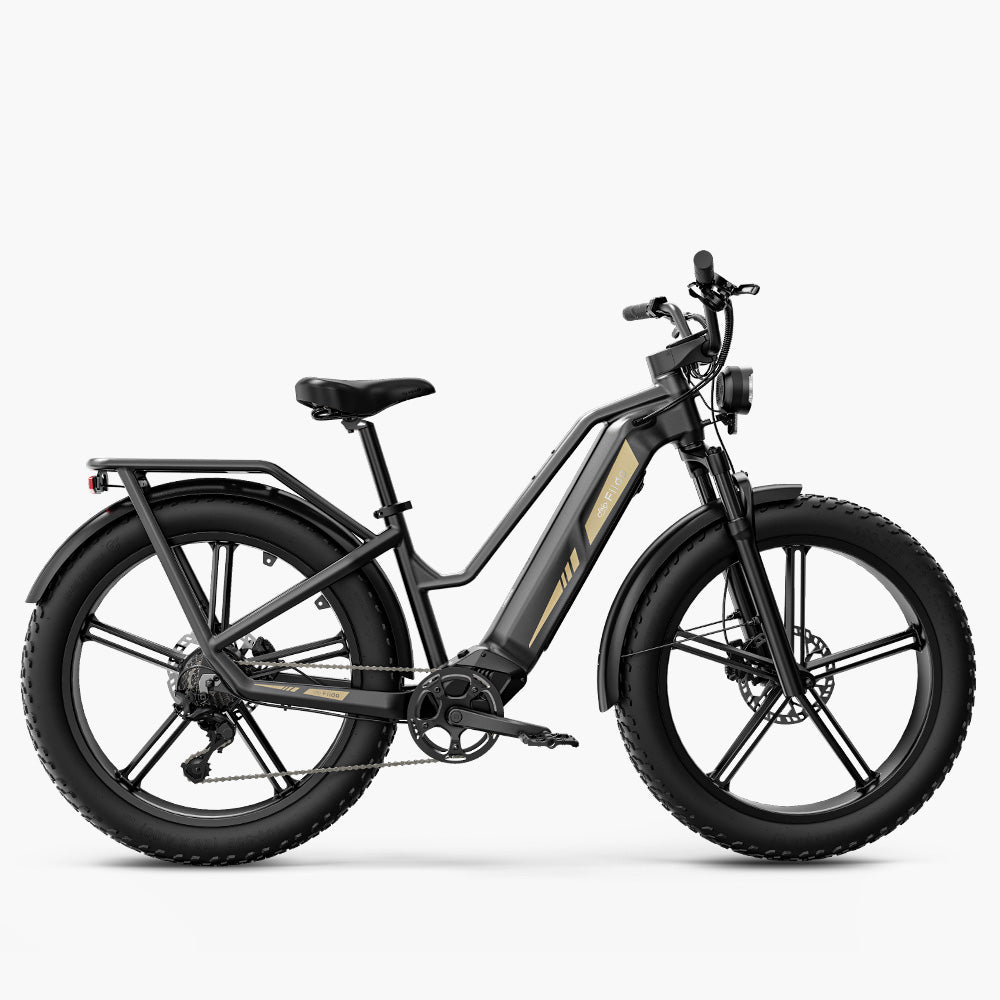As the temperature drops and the nights draw in as winter approaches, many people may be concerned about whether they can ride their ebikes in the snow. The short answer is yes, but there are various factors you should know about before heading out on your ebike after a snowstorm.

In this article, we will discuss everything you need to know about riding an electric bike in the snow and how to do it safely.
The Feasibility Of Riding Electric Bikes In The Snow
It is possible to ride an electric bike in the snow and there are a few things associated with an ebike that help you. The motor assists your peddling, giving you extra power to push on through deep snow. It also means you can conserve energy while riding in cold weather when your body uses more energy to stay warm.
The consistent power delivery from the motor also helps you maintain momentum on slippery and uneven surfaces. But before you head out in the snow on an ebike, continue reading this blog, as there are a few caveats you need to be aware of.
Challenges Of Electric Bikes In The Snow
There are a couple of issues that you need to deal with when you ride an ebike in the snow. The biggest problem lies with low temperatures and battery performance. This is because ebike batteries don't like the cold, and extremely low temperatures affect efficiency, reducing the bike's range.
The next problem is a safety concern, as snow on the ground significantly reduces grip. There are ways around this, which we were going to discuss later, but reduced grip can cause you to skid and crash or have wheelspin, preventing you from rolling forward.
Preparations For Riding In The Snow
Riding an ebike in the snow is possible as long as you are prepared. Here is what you need to know:
Choose The Right Ebike
Not all electric bikes are suitable for riding in the snow. The best winter electric bike is one with fat tires. The high volume and extra width of these tires provide better grip in the snow and sit on top of it rather than cutting through it, improving stability when the conditions are slippery. Your electric bike must also have a waterproof design to prevent water ingress from damaging its electrical components.
Use Correct Tires And Pressures
Reducing tire pressure slightly increases the tire's contact area with the ground, improving grip. However, you should ensure that your tires are suitable for winter riding, as smooth summer tires will never work in snowy conditions. This is why we recommend fat tire electric bikes. Alternatively, you can fit anti-skid winter tires to regular ebikes for extra grip.
Warmth And Protective Gear
Due to the motor assistance, you don't work as hard when riding an electric bike as you would a traditional one. Therefore, you need to ensure you wear appropriate waterproof and insulated clothing. We recommend dressing in layers, which allows you to fine-tune your comfort to suit the temperature.
Riding an electric bike in the winter is more hazardous than the rest of the year. Therefore, wear a well-fitting and quality helmet to protect your head in the event of a fall.
In extreme cases, you may want to insulate your electric bike's battery with a thermal sleeve or cover. This will protect it from subzero temperatures, maintaining a good range.

Tips and Precautions For Riding In The Snow
Here are our top tips for riding an ebike in the snow:
Start slowly
Don't set off in a high assistance mode, as this will cause the back wheel to spin on slippery surfaces. Start in a low gear and eco mode to prevent wheelspin and maintain control.
Maintain A Steady Speed
When riding an ebike in the snow, avoid hard acceleration and breaking. To maintain control, aim to ride smoothly using gradual changes in speed.
Stay Visible
When writing in winter, there's a good chance you will be in low-light conditions. Therefore, make sure your electric bike has good lighting and that you wear reflective clothing to be visible to other road users.
Maintenance After Riding
The winter can take its toll on your electric bike. So, after a ride, follow these steps to ensure your bike stays in great condition for a long time.
1. Clean Your Bike: Snow and salt can cause corrosion. Clean your bike after each ride to remove moisture and dirt.
2. Battery Care: Store the battery in a warm place when not in use. Charge it indoors to ensure it performs optimally.
3. Regular Checks: Inspect your bike for any damage or wear, paying particular attention to bolts, tires, and brakes.
Introducing the Practical Application Of The Fiido Titan Electric Bike In The Snow
The Fiido Titan is not your average touring ebike. It is an excellent choice for winter riding for several reasons. Primarily, its fat tires are robust and offer superior grip and stability when riding in the snow. Also, its powerful motor provides consistent and smooth power delivery, making it easy to progress over challenging surfaces. The battery is also designed to perform well in low temperatures, ensuring you can reach your destination. On top of this, its waterproof design protects vital components from snow and moisture, ensuring longevity and reliability.
Fiido Titan Robust Cargo Electric Bike
248 Miles range, fat tire & 4-piston brakes, hunting e-bike&fishing e-bike.
Conclusion
Riding an electric bike in the snow is entirely possible as long as you have the right bike, prepare, and take the necessary precautions. One of the best all-round electric bikes for riding in the snow is The Fiido Titan. Its fat tires, powerful motor, and robust battery make winter riding enjoyable and safe. However, remember to adapt your riding style to suit the conditions and wear appropriate clothing and protection.
You must also remember to maintain your bike regularly and use the correct tires and tire pressures, especially during winter. If you're looking for a quality electric bike for riding all year round, check out fiido.com to see the excellent range of ebikes that suit most people's needs.














